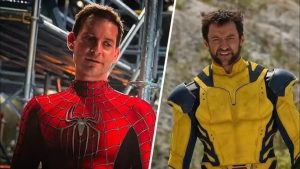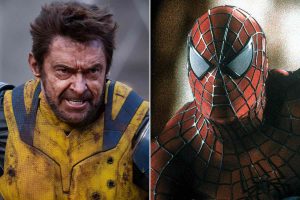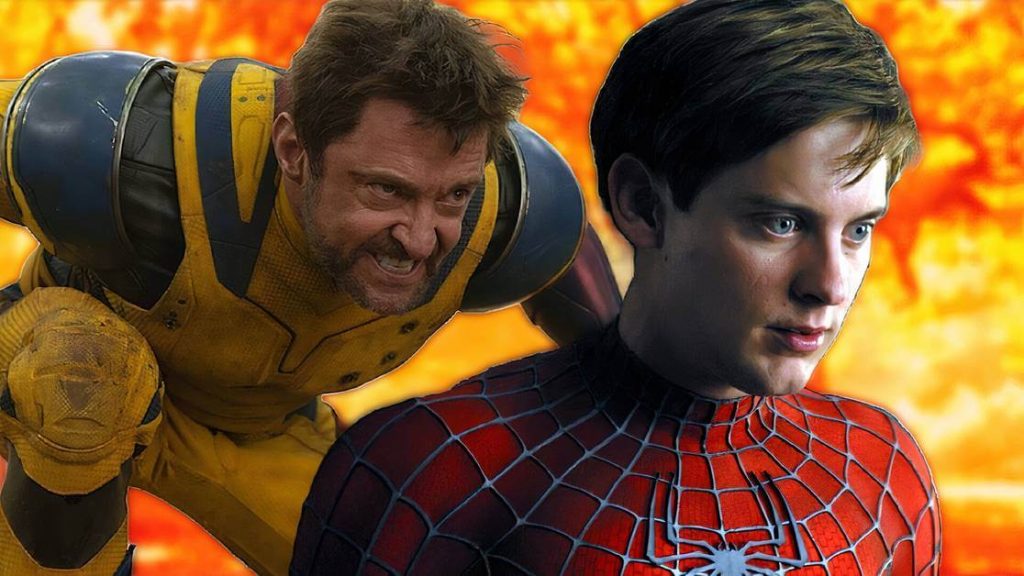world news
Wolverine Meets Spider-Man? The Lost Cameo That Could’ve Changed Superhero Cinema Forever
A Cross-Over That Almost Was: Wolverine’s Vanishing Walk-On
In 2002, as audiences were gearing up for what would become the dawn of modern superhero blockbusters with Sam Raimi’s Spider-Man, a potential cinematic shockwave was quietly forming behind the scenes. According to Hugh Jackman, who had just sliced his way into stardom with 2000’s X-Men, there were genuine plans to have Wolverine make a cameo in Spider-Man. The idea was simple: a subtle walk-on moment where Jackman, as Wolverine, would appear—likely in street clothes—with perhaps a visual hint or signature scowl to spark fan frenzy.
However, the plan fizzled out not because of studio drama or actor schedules, but for a hilariously mundane reason: the production team couldn’t find the Wolverine costume. Jackman revealed this during multiple interviews over the years, including a 2013 conversation and a recent highlight in Entertainment Weekly’s June 2025 feature. “We really tried to make it happen,” Jackman said. “I was in New York, the production was ready, but we just couldn’t find the damn suit.”
Though seemingly trivial, the absence of one costume spelled the end of what might have been the earliest major Marvel crossover in cinema. This wasn’t just a missed Easter egg. It was a symbolic moment—the first sign that filmmakers were dreaming of interwoven cinematic universes well before the Marvel Cinematic Universe (MCU) became a household term. And had it succeeded, it could have rewritten the DNA of modern superhero storytelling years before Iron Man laid the MCU foundation.

Studios at Odds: Licensing, Legal Walls, and Creative Limits
To understand why Wolverine walking through Spider-Man’s New York set was so significant, it’s important to grasp the studio landscape of the early 2000s. At the time, Marvel was a comic-book powerhouse but a fractured film entity. Sony Pictures owned the film rights to Spider-Man. 20th Century Fox had exclusive control over the X-Men franchise. And Marvel Studios, as we know it today, didn’t exist as a production titan under Disney’s umbrella.
This meant that even the idea of characters crossing from one universe to another involved a labyrinth of legal agreements, budgetary constraints, and brand sensitivities. The producers, reportedly including a young Kevin Feige—then a producer on Marvel properties—tried to push the cameo through. But beyond the missing costume, the realities of inter-studio collaboration made the effort complex. Each company was fiercely protective of its intellectual property. Even a one-second cameo required lawyers, approvals, and mutual trust—elements that were in short supply at that stage of Hollywood’s comic-book evolution.
These obstacles help explain why so many superhero crossovers fans fantasized about never materialized during the 2000s. They weren’t lacking in narrative logic or public enthusiasm—they were simply trapped in a web of licensing contracts. Yet the mere attempt to bring Wolverine into Spider-Man’s world foreshadowed the rise of shared storytelling that would soon dominate the genre. It was a glimpse into what could be: a Marvel Multiverse long before the term became part of cinematic vocabulary.
Hugh Jackman’s Reflections: Nostalgia and Missed Opportunities
Over two decades later, Hugh Jackman still chuckles about the lost moment that might have brought Wolverine and Spider-Man face-to-face. In interviews, he describes the effort as both whimsical and serious—a playful idea that carried the weight of possibility. “Whether it was a joke or a real scene, we were serious about making it happen,” he shared. “And fans were always asking, ‘When are we going to see Wolverine with Spider-Man or Iron Man?’”
These questions weren’t just fan service—they were foundational to how modern superhero fandom operates. Today, audiences expect connections, cameos, and continuity across franchises. But in 2002, that thinking was revolutionary. Had the Wolverine cameo worked, it might have set a precedent that studios couldn’t ignore. Instead, it became a Hollywood myth—an opportunity missed due to logistical quirks.
Jackman’s commentary also reflects a deeper truth: even global stars with passion and pull are sometimes powerless against the inertia of industry machinery. For all of Wolverine’s cinematic might, a single lost prop was enough to keep two of Marvel’s most beloved heroes apart—at least for a time. But the myth of the missing cameo continues to resonate, especially now as Marvel prepares for its next major ensemble events.

Full Circle in the Multiverse Era: The Door Is Open Again
Fast forward to 2025, and the dream of Wolverine and Spider-Man sharing the screen no longer sounds improbable—it’s expected. Jackman’s long-retired Wolverine is back in the spotlight with Deadpool & Wolverine, set within the Marvel Cinematic Universe and proudly embracing multiverse storytelling. Tobey Maguire’s Peter Parker made his triumphant return in Spider-Man: No Way Home (2021), reminding audiences of his enduring charm and narrative relevance.
Rumors are now swirling—fueled by leaks and Marvel executives—that the upcoming Avengers: Secret Wars (2027) could feature not only multiversal variants of iconic characters but also long-awaited face-offs and team-ups. Jackman’s Wolverine, Maguire’s Spider-Man, and even Deadpool are all on the shortlist of legacy heroes fans hope to see united on screen. If that happens, it wouldn’t just be a nostalgic reward—it would complete a story decades in the making.
In a poetic twist, what once failed due to a misplaced costume might now be rectified with multimillion-dollar precision. Marvel now has full creative control over both the X-Men and Spider-Man franchises (thanks to its deals with Sony and its acquisition of Fox). The legal and logistical walls that once blocked collaboration are down. And more importantly, the creative culture has evolved to embrace crossovers not as gimmicks, but as storytelling tools.
The cameo that never was could soon become a reality—elevated from background walk-on to cinematic milestone.
Legacy of a Missing Suit: What It Taught Hollywood
Ultimately, the near-cameo of Hugh Jackman’s Wolverine in Spider-Man isn’t just an amusing anecdote. It’s a lens through which we can understand how far superhero cinema has come—and how fan expectations helped push it forward. What was once a genre niche filled with standalone blockbusters has evolved into the dominant storytelling engine of 21st-century film, powered by interconnected plots and decades-spanning loyalty.
Jackman’s anecdote serves as a cautionary tale about how the smallest production failures—like a missing costume—can ripple through time. Had that walk-on succeeded, would we have gotten The Avengers earlier? Would studios have collaborated sooner? It’s impossible to say, but it’s a reminder that every missed opportunity leaves a mark—and sometimes inspires new attempts.
Now, with Jackman and Maguire both active in the MCU multiverse, their unfinished scene might yet come to life. The legacy of that lost cameo is that it still matters. It’s still discussed. And, in true Marvel fashion, there’s still time for redemption.
From greylittlearrows


